Zip lines may seem simple on the surface; clip your trolley onto the line, and let gravity do all the work! But there are many factors and plenty of work behind the scenes of every zip line installation. Zip line builders must consider slope, wind, temperatures, varying rider weights, friction, rider speed, and other variables to create a successful zip line. It’s no easy task.
As a starting point for those considering building a zip line, we’ve put together a primer on the essential components of a complete zip line system. Each component in your design should be considered and tested as one part of the entire zip line system, and the zip line installation and design should be done by a qualified professional. Zip line safety should be the first priority.
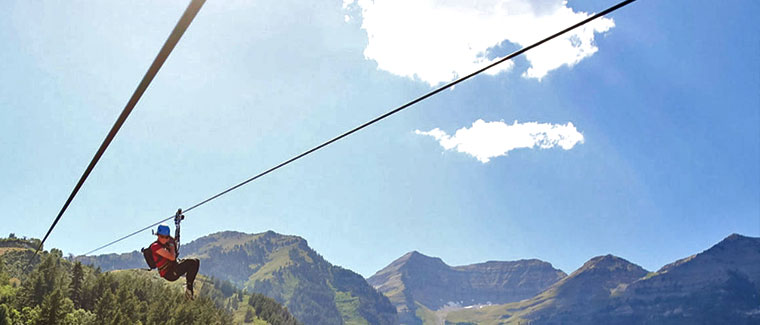
The Zip Line Cable
In zip lining as in life, it’s about the journey and not the destination, and the line is what defines your zip line. The line defines what scenery or views your riders will enjoy, how long they will enjoy those views, and how fast they will go. The length and starting and ending points will be some of the first decisions you have to make when designing your zip line. As for the line itself, many zip lines are made of stainless steel or galvanized aircraft cables.
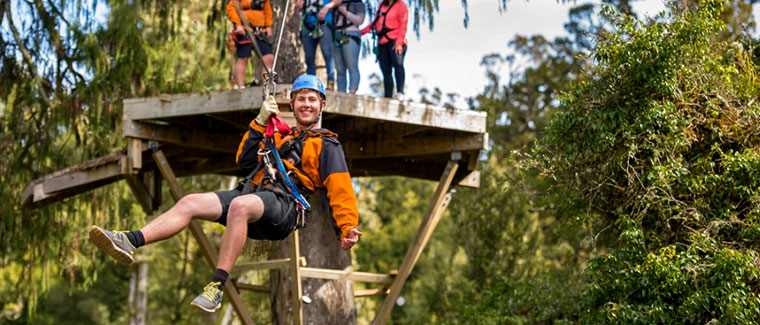
The Zip Line Platform
Many zip lines have platforms where the riders start from and end at. If you have topography working for you, you may only need simple platforms for riders. You may need raised platforms if you do not have enough elevation change. Zip line platform design will depend on topography, primary and secondary brake requirements, and space required for guide and rider comfort. Make sure your platform is long enough to give your zip line brake plenty of room to operate safely while still leaving space for an appropriate emergency brake.
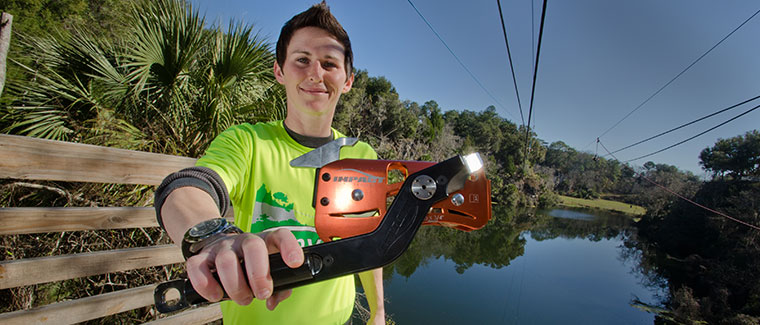
The Zip Line Trolley
The zip line trolley is your rider’s vehicle down the line. Trolleys come in many different shapes and sizes, so how do you pick? Think about how fast your zip line is and make sure your trolley can handle those speeds. The trolley should also be designed to match the braking system at the end of your line. For example, we created the only trolleys designed for impact braking. LightSpeed trolleys are made to be durable and to reduce wear on your zip line equipment.
An another option to create a safe braking situation in Zipline opreration, is the use of our Self-braking Zip line pulley with integrated magnetic brake. The MAG Brake Trolley, is a self braking zip wire pulley that solves the major safety issues around the controlled and safe braking situation at the end of high speed zip wire courses.
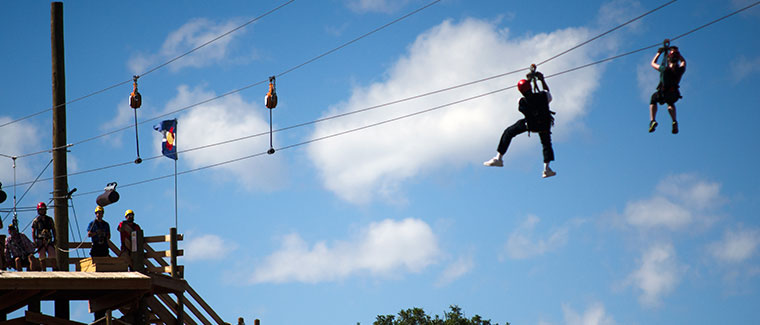
The Zip Line Brake
This is one of the most important parts of the zip lining experience. Many riders will ask “How do I stop at the end” before they clip in to the ride. That’s because they want to know what to expect at the end and what they will be required to do. The best zip line brakes offer passive braking; this means the rider does not have to participate in braking and will automatically be slowed to a stop at the end of the line. Skywalker adapted the patented magnetic braking technology and created the zipSTOP Zip Line Brake, an innovative product that improves the customer experience, throughput, and reliability on your zip line.
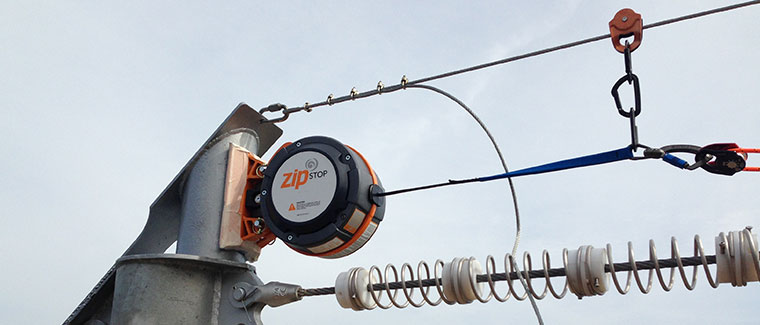
The Emergency Backup Brake
An emergency arrest device (EAD), or emergency brake, is an essential component of a complete zip line brake system. An EAD is a secondary brake that will automatically engage in the event that the primary brake fails and will prevent rider injury or death. When installing a zip line, unmanned testing should be conducted to ensure proper function of both the primary brake and the EAD. Check out our white paper on EADs to get complete details on this essential zip line component.
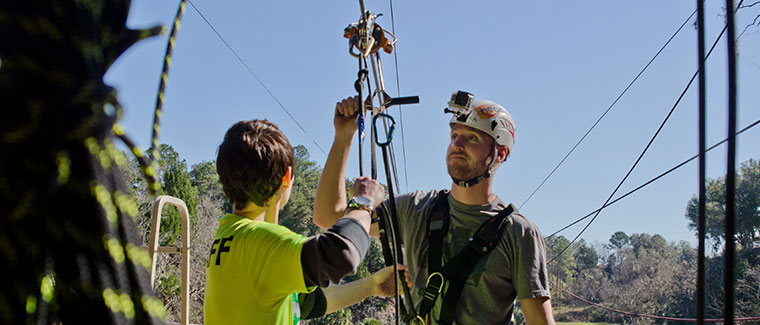
The Guides
A perfectly built zip line still needs personable, well-trained guides to provide an excellent rider experience. Zip line guides are there to do more than provide proper rider procedure and safety information. They should be able to share information on the area, the scenery, and the surrounding environment to further engage riders in the experience. Invest in guides who are personable and give them training to help create the best zip line ride.
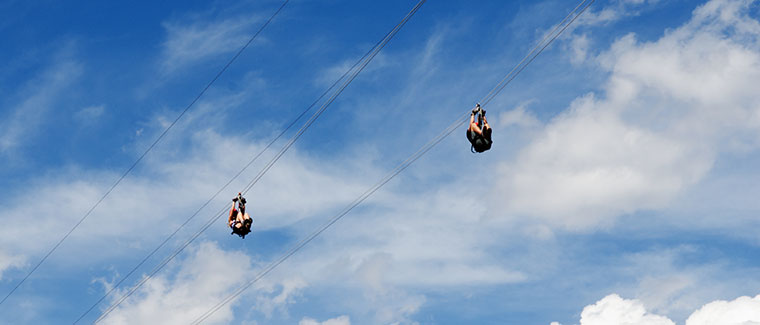
The Riders
With all other zip line components in place, now we just need riders to harness up, sail the line, and enjoy the views! Decide who your target audience is based on what type of zip line you offer. Are you a canopy tour at an eco-tourism destination? Are you a high-speed zip line at an adventure tourism destination? Are you a zip line tour at a local attraction targeting families? Your target audience will inform how you market your zip line and how you build the experience from start to finish.
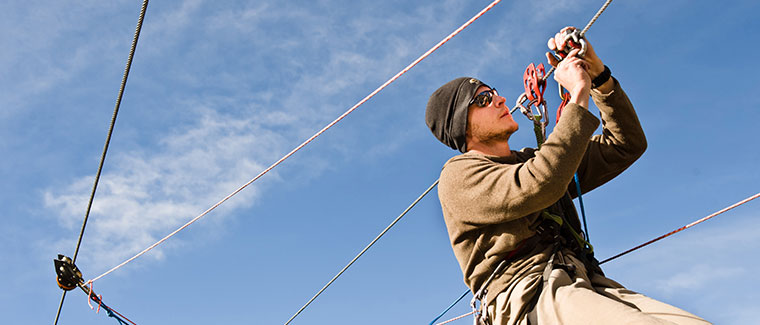
The Zip Line Inspection
The zip line design and installation are just the first step. Once your zip line is operating, don’t forget to conduct ongoing inspections and maintenance. Each element of the zip line should be inspected and routine maintenance should be performed.
Planning a zipline installation? Need expert advice on zipline design?
Get started Today
Additional expert Information regarding Zipline technology
Interested to read more about Zipline technology and expert opinions?
- The Power of Zip Line Simulation Software
- Bi-Directional Zip Line Technology
- Zip Line Design: Components for a Complete System
- How a Zipline Feasibility Study Guarantees Success
- MAG Brake Trolley, the Magnetic Self-braking Zipline pulley
- Professional Zipline Engineering & Design services
- How to Launch a Zip Line Company
- The Science of Zipline Design and Engineering
- Zipline Mistakes You Don’t Know You’re Making
- Key elements: Zipline Design and Engineering
- Thinking of investing and operating a Zipline?
- Zipline Emergency Arrest Devices (EADs)
- The ZipCoaster - Fly through the air, dipping and twisting
- Pros and Cons of Different Zip Line Brakes
- Expert Tips for Zip Line Brake Installations
- Thinking of investing and operating a Zipline?
- Ingenious inventions. The curvy zip line












